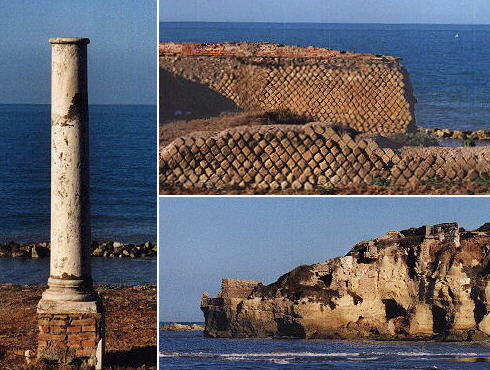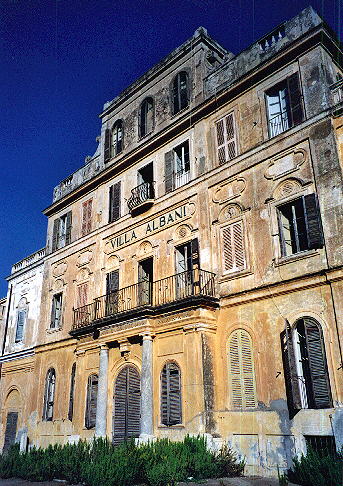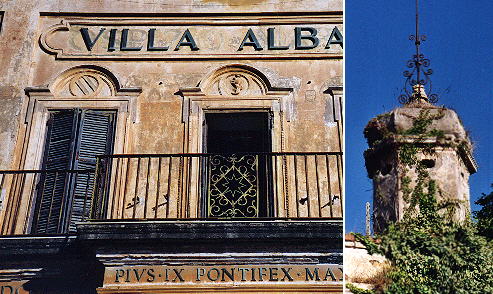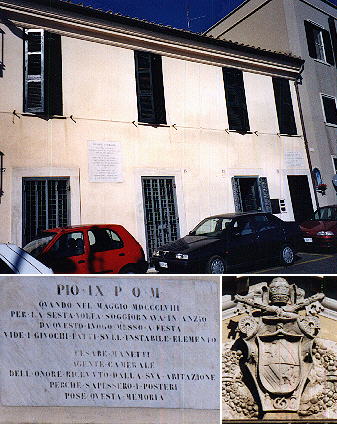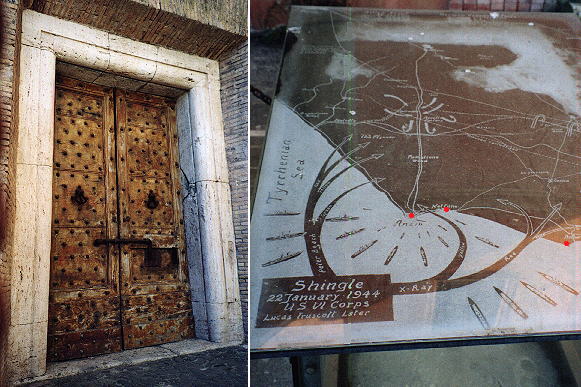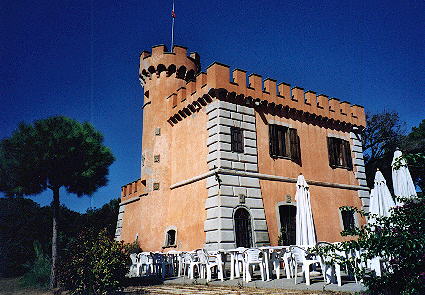  Ferdinand Gregorovius' Walks - On the Latin shores - part one Ferdinand Gregorovius Ferdinand Gregorovius was born in 1821 in Neidenburg a town in Eastern Prussia. He studied theology and philosophy in Konigsberg and became a teacher and a writer for the local paper. In 1852 he made his first trip to Italy and he started researching the history of Rome after the fall of the Roman Empire. His studies were finalized in 1872 by publishing the History of the City of Rome in the Middle Ages (8 vol.), which is still today regarded as a fundamental text by modern historians. His fame however came from the accounts he made of various sites of Italy in Wanderjahre in Italien (Italian Wanderings). This page is based on a description of the shores of Latium (Idyllen vom Lateinischen Ufer) around the town of Anzio. Gregorovius visited Anzio in 1854. Anzio Gregorovius leaves Rome on June 24 from Porta S. Giovanni. The road
to Anzio follows Via Appia Nuova until Frattocchie and then Via Nettunense. The journey takes five hours: the last two hours are spent crossing
the wood which bordered the coastline of southern Latium. At the time it was populated by wild animals and it was a brigands' favourite retreat.
Palazzo Albani In 1697 Pope Innocentius XII restored the port of Anzio and set up a penal colony to provide the workforce for dredging the sea bottom. Anzio became again a resort for the richest Roman families. The health conditions were however worse than in Roman times, so the villas were built at a certain distance from the sealine to minimize the risk of malaria. The villas were used just for a few weeks in May and June, because the heat of the summer spread the fever. Cardinal Albani had a villa with a large park, where excavations brought to light many Roman statues. J. J. Winckelmann who acted as secretary to Cardinal Albani lived here.
When Gregorovius came to Anzio, the villa had been bought by Pius IX, who used to come to Anzio every year.
His heraldic symbols (rampant lion and stripes) are still noticeable in the very much run down
Palazzo Albani: the balcony however shows the star of the Albani. Few of the XVIIIth century villas
have resisted the expansion of modern Anzio, but still here and there the eye notices signs of that period.
Pius IX Pius IX was elected pope in 1846 at the age of 54. His first acts raised great hopes among the Italians and
for a while the achievement of the unity of the country was sought through a federation of states under
the leadership of the Pope.
Memories
Villa Borghese
In 1831 Prince Borghese acquired the whole area of Anzio and Nettuno. Midway between the two towns the Borghese had their Villa, which is now partly a public garden and partly a private property. The background of this page shows the coat of arms of the Borghese in a late XIXth century building in Anzio. The Villa had its own watch tower, which today hosts a little restaurant commanding a view over the coast. Gregorovius was fascinated by this view. His interest in medieval history made him eager
to visit Torre Astura, the site where the fortunes of the Hohenstaufen came to their last turning point.
Other walks with Ferdinand Gregorovius: Roman Campagna (Aus der Campagna von Rom): Palestrina Genazzano Paliano Anagni The Ernici Mountains (Aus den Bergen der Herniker): Ferentino Alatri The Volsci Mountains (Aus den Bergen der Volsker): Valmontone Segni Norma Cori On the Latin shores (Idyllen vom Lateinischen Ufer): Anzio Nettuno and Torre Astura Circe's Cape (Das Kap der Circe): Terracina San Felice The Orsini Castle in Bracciano Subiaco, the oldest Benedictine monastery  or to
The Coats of Arms of the Popes or
to My Home Page on Baroque Rome or to
My Home Page on Rome in the footsteps of an XVIIIth century traveller or to
The Coats of Arms of the Popes or
to My Home Page on Baroque Rome or to
My Home Page on Rome in the footsteps of an XVIIIth century traveller
|
All images © 1999 - 2003 by Roberto Piperno. Write to romapip@quipo.it
